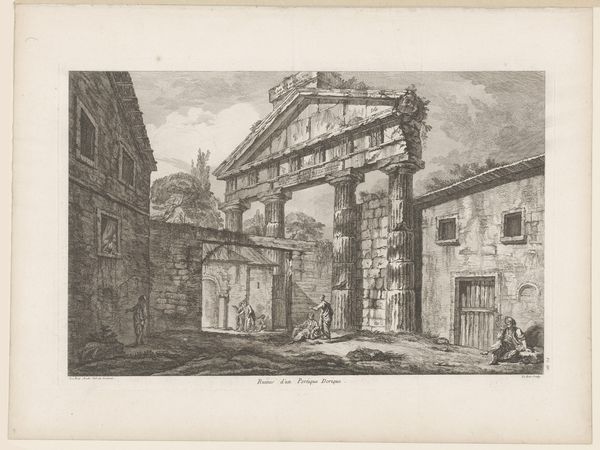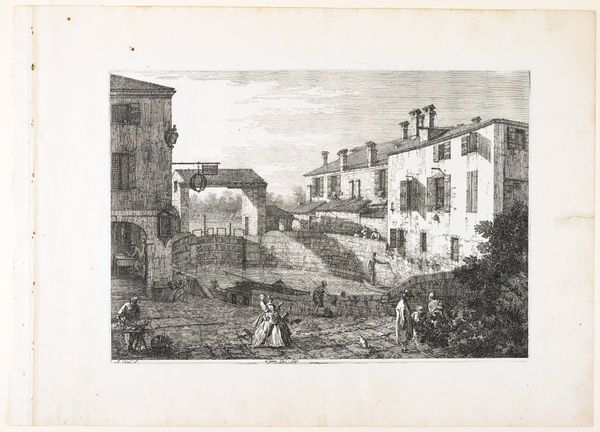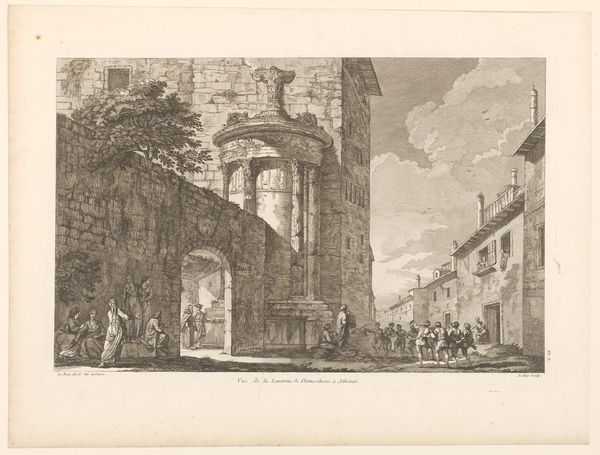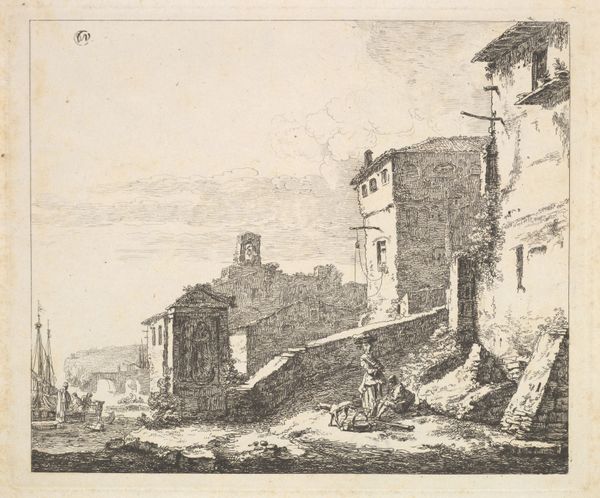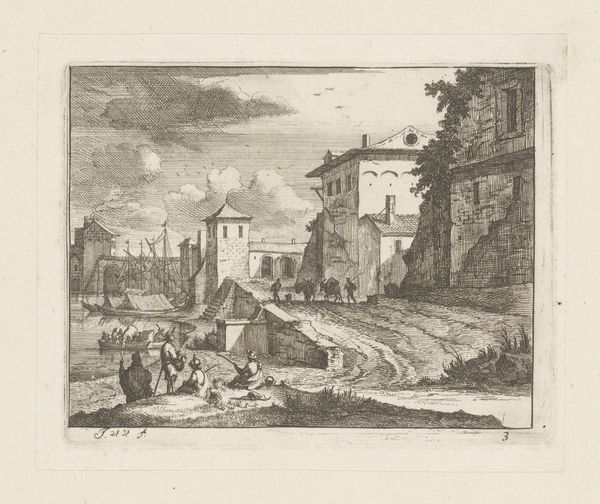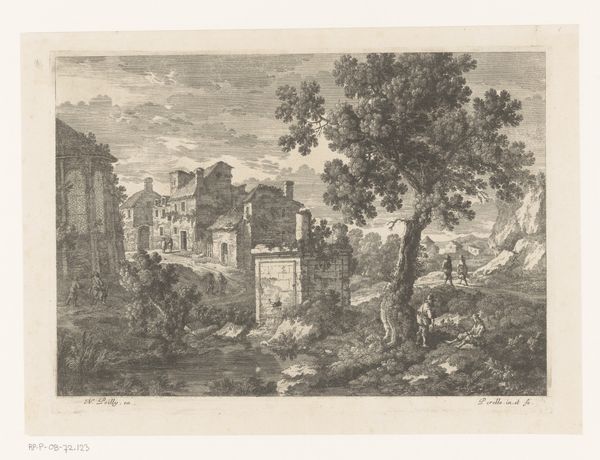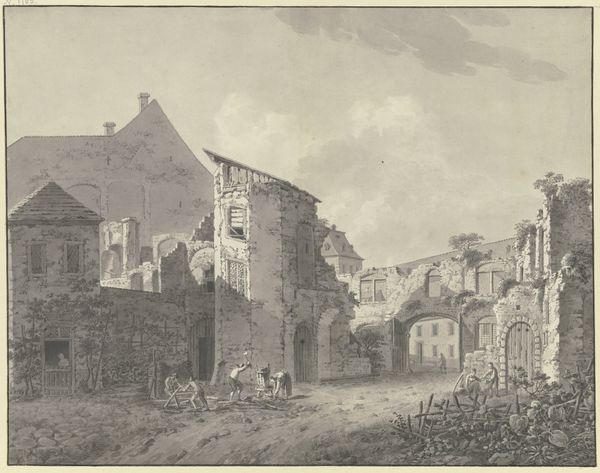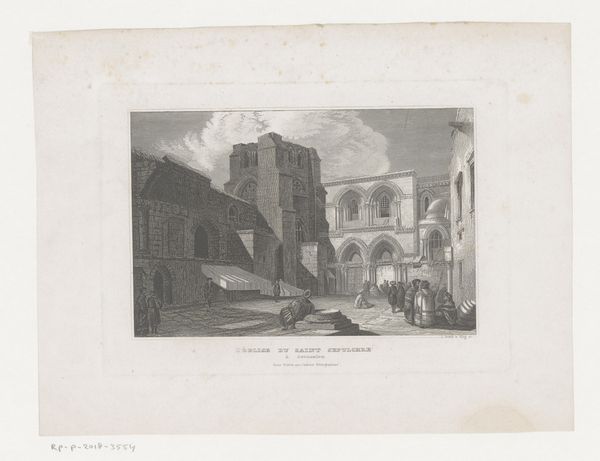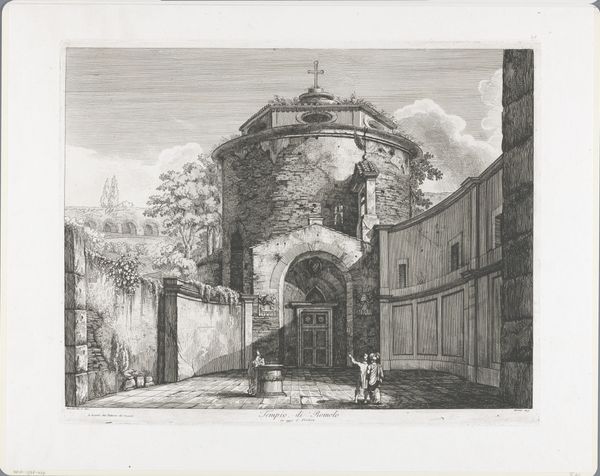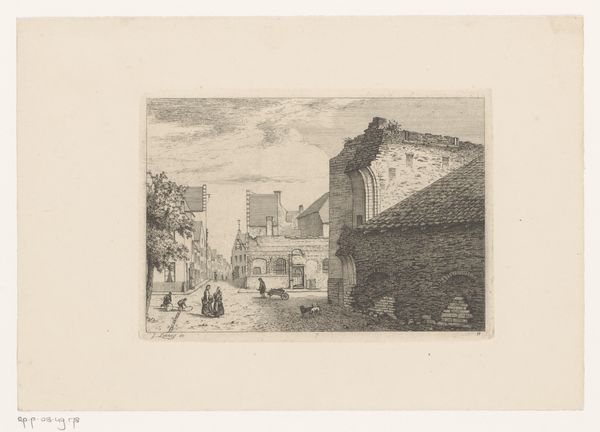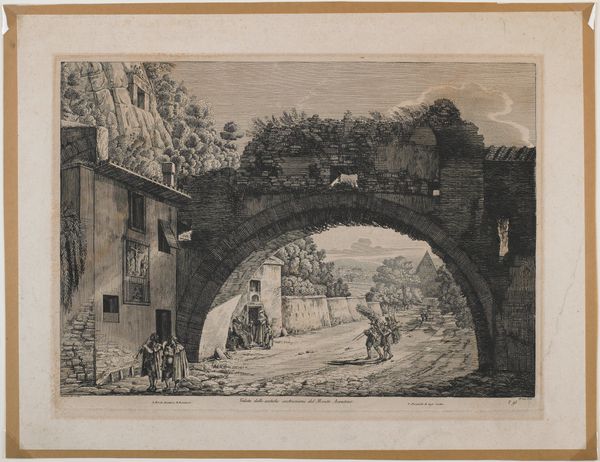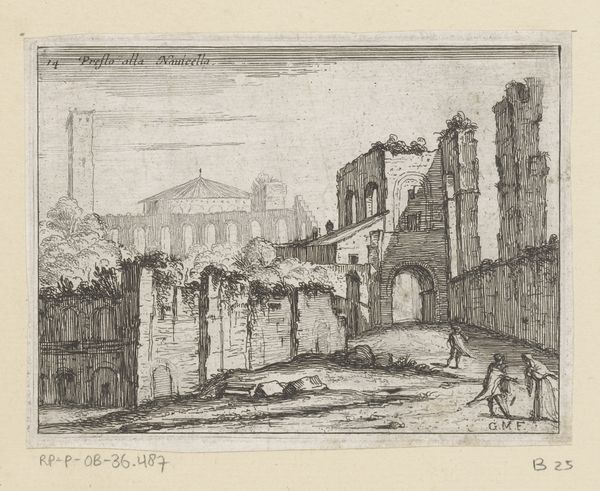
print, etching
#
baroque
# print
#
etching
#
landscape
#
etching
#
cityscape
Dimensions: height 307 mm, width 464 mm
Copyright: Rijks Museum: Open Domain
Editor: So, this etching by Jacques Philippe Le Bas is called 'View of the Old Bazaar of Athens,' and it dates back to 1758. I'm struck by how the artist has contrasted these ancient ruins with the hustle and bustle of everyday life. What exactly were audiences meant to take away from seeing Athens depicted this way? Curator: That’s a crucial question. Consider that prints like these were popular souvenirs for wealthy Europeans on the Grand Tour. But it’s not a straightforward documentation. Le Bas is mediating our view, shaping it to meet expectations. Editor: Expectations? Curator: Precisely. Look at the dramatic ruins, the almost theatrical lighting. There's a clear visual rhetoric being employed. The ruins are picturesque, imbued with a sense of faded glory that reinforced European ideas about classical antiquity. Were these views coloured by colonialism? Editor: You mean, this isn’t just a scene; it's a carefully constructed *idea* of Athens, packaged for a specific audience and serving specific power dynamics? I hadn’t thought of it that way, focusing more on the historical aspects alone. Curator: Absolutely. And it tells us as much about the cultural assumptions of 18th-century Europe as it does about the Old Bazaar of Athens. It reveals the European gaze upon other cultures, reinforcing or challenging existing social structures and power imbalances. Editor: That makes me reconsider everything I thought I knew about travel art. This isn’t just a picture, it's a statement. I am keen to research on that idea. Thanks. Curator: My pleasure. Art is always communicating something, and context gives us the means of interpreting it.
Comments
No comments
Be the first to comment and join the conversation on the ultimate creative platform.
